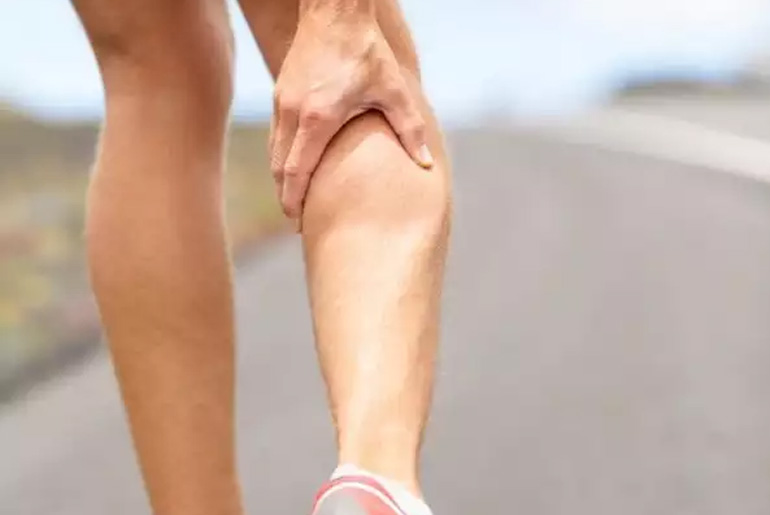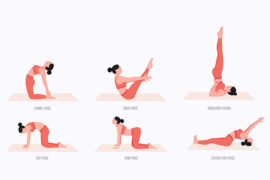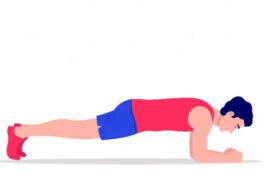Embarking on a fitness journey is a fulfilling pursuit, yet the aftermath often introduces a familiar companion—muscle soreness. This post-workout ache serves as a testament to the dedication invested in exercise, forming an integral part of the fitness experience. Regardless of whether one is a seasoned athlete or a newcomer adopting a healthier lifestyle, the sensation of tender and tight muscles becomes both a badge of honor and a source of discomfort. Muscle soreness following a workout is a natural response to the muscle damage and inflammation induced by exercise, reflecting the body’s adaptive processes and signaling progress in the pursuit of physical well-being.
Reasons Behind Post-Workout Muscle Soreness:
Muscle soreness after a workout, commonly known as delayed onset muscle soreness (DOMS), arises due to various factors associated with physical exertion. During intense or novel exercise, particularly resistance training or high-impact activities, muscles undergo microscopic damage and inflammation as they adapt to the stress placed upon them. This microtrauma triggers an immune response, leading to the release of inflammatory mediators and an influx of immune cells to repair and rebuild the affected muscle fibers.
Additionally, the accumulation of metabolic byproducts such as lactic acid, along with the disruption of cellular homeostasis and the stretching of muscle fibers beyond their accustomed range, further contribute to the sensation of soreness and stiffness. While DOMS typically peaks within 24 to 72 hours post-exercise and gradually resolves as the muscles recover and adapt, it serves as an indication of the body’s adaptive processes and eventual improvement in strength and endurance.
- Lactic Acid Buildup: While once thought to be the primary culprit, lactic acid buildup isn’t actually the main cause of muscle soreness. However, during intense exercise, lactic acid can accumulate in the muscles, contributing to fatigue and discomfort. As the body clears this buildup, soreness may be experienced.
- Increased Blood Flow: After a workout, there’s an increase in blood flow to the muscles. This helps deliver oxygen and nutrients necessary for recovery but can also contribute to feelings of warmth and tenderness.
- Muscle Swelling: Inflammation and fluid buildup in the muscles can lead to temporary swelling, which can exacerbate feelings of soreness and stiffness.
- Microtrauma: When we exercise, particularly during resistance training or high-intensity workouts, muscle fibers undergo small tears or damage. This is a normal part of the muscle-building process, but it can cause soreness as the body repairs and strengthens those fibers.
- Inflammatory Response: As the body repairs the microtrauma, it triggers an inflammatory response. This involves the release of various chemicals, including prostaglandins and cytokines, which promote healing but also contribute to soreness and discomfort.
Understanding these mechanisms can help individuals better manage post-workout soreness by incorporating strategies like proper warm-ups, cool-downs, adequate hydration, and nutrition, as well as gradual progression in exercise intensity.
Guide to Effectively Overcoming Post-Workout Soreness:
- Gradual Progression: Allowing your body to adapt gradually to increased exercise intensity can prevent excessive muscle damage and soreness. This is especially important for individuals starting a new workout routine or progressing to more challenging exercises.
- Proper Warm-up and Cool-down: A dynamic warm-up helps increase blood flow to the muscles and improves flexibility, preparing the body for the upcoming activity. Cooling down with static stretches can help prevent stiffness and promote flexibility. Both are crucial for injury prevention.
- Hydration and Nutrition: Staying hydrated is essential for overall health and aids in nutrient transport to the muscles. Proper nutrition, including an adequate intake of protein, carbohydrates, and antioxidants, supports muscle recovery and reduces inflammation.
- Rest and Recovery: Giving your body time to rest and recover is vital for avoiding burnout and minimizing muscle soreness. Overtraining can lead to increased risk of injury and prolonged recovery times.
- Foam Rolling and Massage: These techniques can provide relief by targeting specific muscle groups, breaking up knots, and improving blood circulation. Incorporating them into your routine can contribute to enhanced flexibility and reduced muscle tension.
- Active Recovery: Engaging in low-impact activities on rest days helps maintain mobility and circulation without placing excessive stress on fatigued muscles. Activities like swimming, cycling, or yoga can promote recovery and prevent stiffness.
By combining these strategies, individuals can create a well-rounded approach to fitness that not only minimizes muscle soreness but also supports overall health and longevity in physical activity.
Disclaimer:
The information contained in this article is for educational and informational purposes only and is not intended as a health advice. We would ask you to consult a qualified professional or medical expert to gain additional knowledge before you choose to consume any product or perform any exercise.







